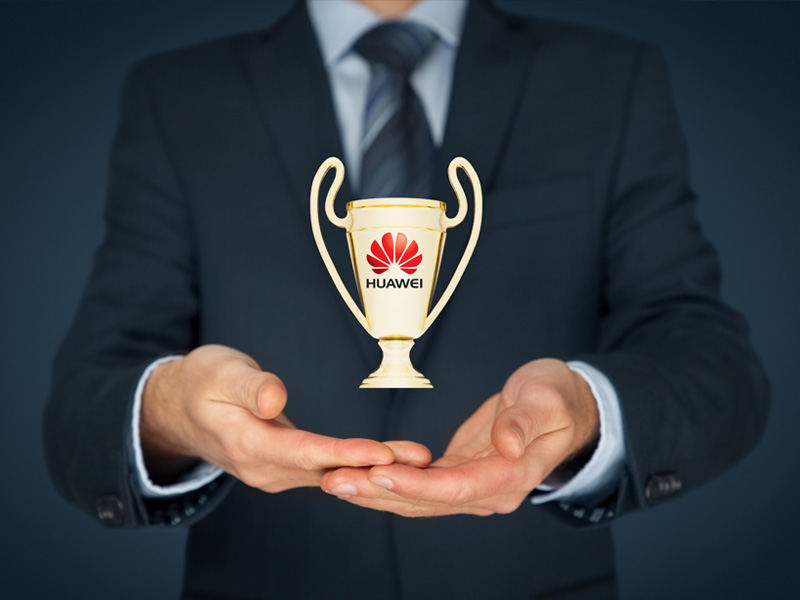Employee appreciation can go a long way. In this article, the author elaborates on giant telecom Huawei’s strategy of using “trophies” as incentives and motivation for its employees and teams and how these contribute to Huawei’s global success.
In the aftermath of the financial crisis, economic growth in advanced economies slowed down considerably. According to the IMF this slower rate may be here to stay for quite some time. At the same time, growth rates in emerging economies are also slowing down, with the decision of China to let go of double digit growth and adjust to more achievable targets as maybe the prime example of this development. An important consequence of this global slow-down in growth is that living standards will not improve for the next few years. This also means that organisations expect their employees to work harder and longer without any increase in remuneration. From the perspective of motivating employees – and especially so the most talented ones – to keep putting the work in and staying loyal to the organisation, such an economic downturn is extremely challenging. The lack of resources holds that financial incentives are less easy to use in talent management. As such, organisations are looking for non-financial incentives that recognise the work of the employee in such a way that they feel they belong to the organisation and remain motivated to put in the hours.
When financial resources are lacking, psychology dictates that people will consider money as a less diagnostic cue to assess how they are evaluated by the organisation and how they compare to their co-workers. Rather, because all employees have a desire to have their hard work recognised, they will compare themselves with others on more social and relational dimensions. In other words, in situations of economic turndown, employees will achieve their sense of pride and confidence from social feedback that signals what their status within the organisation is. Status is defined as an index of social worth that include the prestige and esteem that others ascribe to an individual.1 One way to recognise the work of employees in a relational manner concerns the use of employee awards or trophies. Using trophies to reward your employees can take place at all levels in the organisation and represent a symbolic message of how much you value your employees. Because of its clear relational value, employees are positively affected in their sense of esteem, pride and loyalty to the organisation.
Broadly speaking two types of relational awards can be distinguished. The first one involves the individual award in which the personal performance of the employee is used as criteria to award a trophy. The second type involves the team award in which performance based on cooperation is rewarded. Important to note is that these trophies are not new ways of motivating employees, but because of the economic slow-down more cost-effective incentives are necessary, and therefore the use of trophies have gained attention from companies again. In addition, it is also interesting to see that the use of symbolic labels and trophies are actually popular tools among millennials or also called the generation Y. Millennials are born between 1980 and 2000, and considered more self-focussed and savvy in putting their profiles out there in the public. This latter aspect makes that this generation is sometimes also referred to as a “trophy generation”, motivated to share any status recognition enthusiastically on social media.2 The group of millennials count around 80 million people and are currently coming to age in the workforce.3 Because this large group will be the future leadership in our organisations, a closer look to effective use of trophies is warranted.
Another reason that warrants a focus on the use of trophies concerns the fact that the economic downturn is a global one. This makes that it is necessary to zoom in closer as well on possible cultural differences in the use of trophies as motivation tools. It is known that motivational factors can vary a lot across cultures, and when it comes down to being recognised by the company as a valuable employee, differences do exist between the East and West. For example, until now, scholars and business consultants assume that individual trophies and symbolic awards indicating your status within the organisation are more likely to be accepted and reveal effects in more individualistic cultures rather than relational and collective cultures like China and Japan, respectively. In these latter countries, rewarding a specific individual may undermine team cohesion as in Asian cultures employees prefer to be recognised for their collective rather than individual efforts. As a result, if a specific individual is recognised by the company it may even lead to a loss of face for this employee. In China, for example, the respect and dignity they receive from others contributes to their face, but because of the relational nature of their culture, their identity is more a social identity rather than a personal identity.4 Hence, being recognised as a team player and contributing to the collective rather than an individual doing well is more important.
As these symbolic recognitions are embraced by the future workforce that will come into charge (millennials) and it needs to work at a global level, I analysed the approach of a multinational company where East and West meets. This company is Huawei. Huawei was founded in 1987 by Ren Zhengfei and over the years this company has become a global leader in the telecom industry. In 2012, surpassed Ericsson as the world leader in terms of sales revenue and net profit. Ever since then, revenue has only increased each year. In the fiscal year of 2016 Huawei’s revenue reached CNY521,574 billion (US$75,103 billion) and CNY37,052 billion (US$5,335 billion) in net profit. The company is hailed as the only truly global company with Chinese roots as the largest part of its revenue is earned outside of the Chinese market (67%), which no other Chinese company has achieved so far, and out of its 170,000 employees over more than 40,000 are international employees. As this company represents a mix between East and West management practices and philosophies, to what extent is recognition trophies used and in what way?
In light of this question, it is necessary to first emphasise the importance that Huawei assigns to experimenting with Human Resource practices. Specifically, inspired by the passion of its founder Ren Zhengfei to understand more deeply the workings and psychology of human nature, the company has adopted an approach where it uses human desires to inspire new HR practices.5 This is also the case when it comes down to motivating employees. One important means to motivate is to respect and reward employees showing a transformation at the job that indicates loyalty and high level of morale. Huawei uses different types of trophies to reward employees. No distinction is made between Chinese and international employees; all are eligible to participate for the same trophies.
Some aspects with regard to the award process of these trophies are important to mention. First of all, the decision-making process is a bottom-up one. Contrary to traditional Chinese work cultures where decision-making takes the form of a top-down approach, Huawei’s first selection process to identify potential recipients of the trophies takes place within the departments these employees work. The departments coordinate and execute this selection process by means of their own criteria. A second characteristic concerns the level of trophy, that is, whether it is an award for the individual or team. By making this distinction Huawei shows that it integrates both Western and Eastern approaches by reflecting both individual and collective identities of its employees. A third characteristic concerns the selection dimension used to select employees for these trophies. Some trophies reflect people’s actual performance levels whereas other trophies go beyond the performance of the employee and look more at his or her citizenship behaviour. Based on these dimensions, Huawei allocates three different types of trophies (see Table 1).
The first two trophies are included in the category called “Golden Trophy” and these are allocated to both an outstanding individual and team. The Golden Trophy is the company’s most important award and only the team and individual with the best performance level can win this award. The departments within Huawei decide on the Golden individuals and teams when they have their administration meeting. When each department has decided on their individual and team, the names move up to the Huawei leadership level where it is decided which individual and team wins the Golden Trophy. The winners are admitted to the hall of honour in Huawei’s headquarter office.
The third type of award is the trophy for future star and is different from the Golden trophies in the sense that it is an award that is not based on the performance of the individual employee. The future star is someone who is considered active and passionate in helping others and being a good citizen. Huawei takes the perspective that not every employee can perform in outstanding ways but that it is important to keep all employees motivated and that in this process it needs to be communicated that not only performing matters to make a company successful. Each department selects its future stars and because it is rewarding citizenship behaviour the criteria are less rigid and more open to interpretation than those used for the Golden trophies (which solely depend on the actual performance ratings). Once each department has decided on their future stars, the trophies will be given by the Huawei leadership.
Non-monetary incentives like trophies can be powerful motivation tools to make employees loyal to the company and adhere to higher morals. These employee attitudes are important for companies to perform better, especially so on the long-term. In fact, companies populated by loyal and committed employees who are value-driven are increasingly recognised more as the ones likely to survive on the long term in today’s unstable economy. An additional challenge is that business has become a global issue and therefore the use of trophies needs to represent traditions of both individualistic and collective cultures. As our Huawei examples demonstrates, these awards also should be based on both performance and non-performance dimensions, if its symbolic value of respecting and valuing employees is to be salient to the recipients. Only if this symbolic message is clear to employees will they be motivated.
About the Author
 David De Cremer is the KPMG Professor of Management Studies at the Judge Business School, University of Cambridge, UK, where he heads the Department of Organisational Leadership and Decision-Making. He is the author of the book Pro-active Leadership: How to overcome procrastination and be a bold decision-maker (2013) and co-author of “Huawei: Leadership, culture and connectivity” (2017).
David De Cremer is the KPMG Professor of Management Studies at the Judge Business School, University of Cambridge, UK, where he heads the Department of Organisational Leadership and Decision-Making. He is the author of the book Pro-active Leadership: How to overcome procrastination and be a bold decision-maker (2013) and co-author of “Huawei: Leadership, culture and connectivity” (2017).
References
1. Blader, S. L., & Chen, Y.-R. (2012). Differentiating the effects of status and power: A justice perspective. Journal of Personality and Social Psychology, 102, 994–1014.
2. Ethics Resource Center (2013). Generational differences in work-place ethics. Washington, DC: Ethics Resource Center.
3. Weber, J. (2017). Discovering the millennials’ personal value orientation: A comparison to two managerial populations. Journal of Business Ethics,143, 517-529.
4. Leung, T. K. P., & Chan, R. Y. K. 2003. Face, favour and positioning – A Chinese power game. European Journal of Marketing, 37, 1575-1598.
5. De Cremer & Tao, 2016


































































